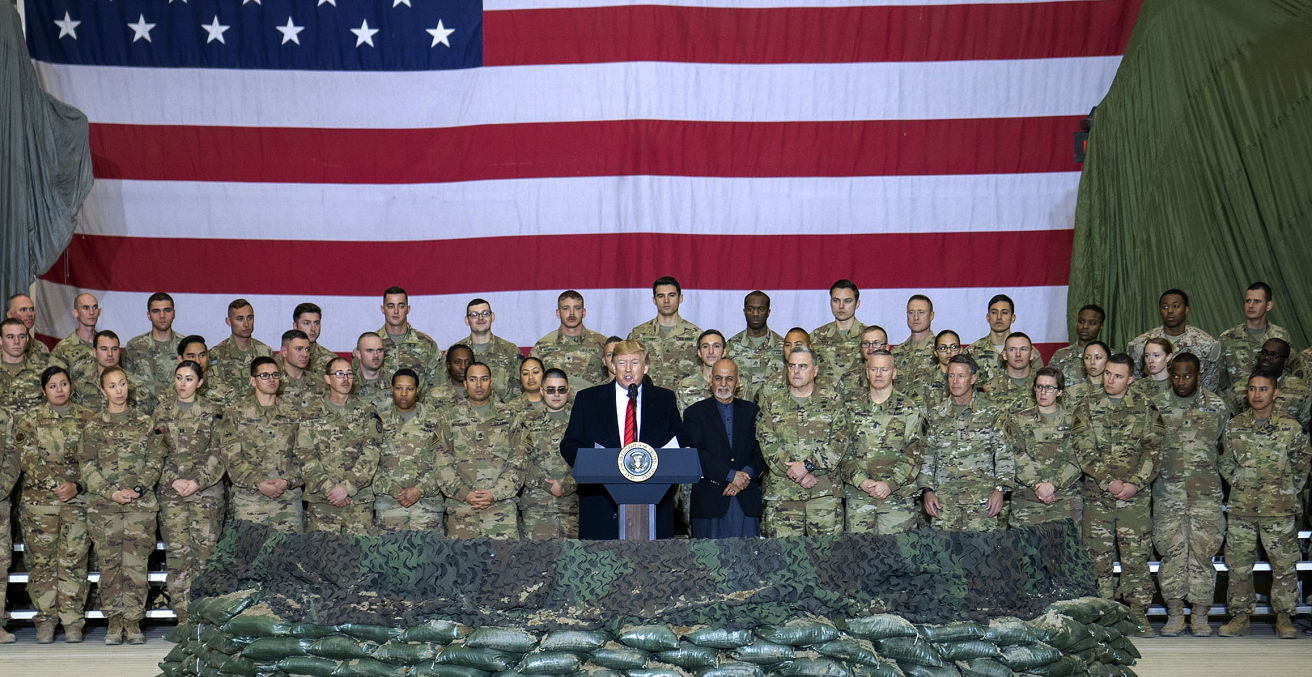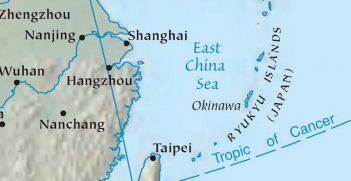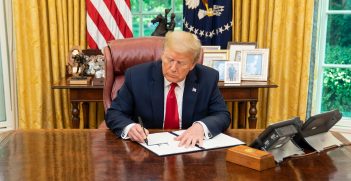Truce by Trial and Error: The Tangled US-Taliban-Afghan Triangle

The future of Afghanistan seems to be predicated on a truce by trial and error. The United States is the cause of insecurity in Afghanistan and if Afghanistan wants to be independent and at peace, the best hope may be a future without active US involvement.
The United States concluded a so-called “truce” with the Taliban in mid-February. Unfortunately, if one bothers to view the actual amorphous details of this truce, it becomes fairly obvious that its only real likely political consequence is the opportunity for President Trump to keep his pledge to remove American troops from Afghanistan. The fact that he wants to do so in 2020, a presidential election year, regardless of Afghanistan’s capability to civilly mend its internal strife and disagreements, shows how this instance of international negotiation is more about voters in Ohio, Michigan, and Florida than in Kabul or Kandahar.
Although there are various obstacles to real peace, there is also a small beacon of potentiality. The presence of Mullah Baradar, one of the founders of the Taliban’s core, at the talks was important and could help the Taliban make productive decisions in negotiations. Mullah Baradar is a prominent Taliban commander who has a background in the Taliban government. His entry into the US-Taliban talks in their fifth round could have a major intra-organizational impact on the Afghanistan peace process becoming more substantive. Since part of the Taliban’s most important decision-making circle has now come into these talks with the United States, it could make for final decisions that have more teeth than in the past. Despite repeated calls by the Afghan government to be allowed into these initial negotiations with the Taliban, the group has so far refused to negotiate directly with the Afghan government. The US, however, has implicitly insisted that a deal with the Taliban be conditional on a ceasefire and ultimately, talks between the Taliban and Afghan government. So, while the outcome of the talks without the presence of the Afghan government is unknowable, this small success in Doha, Qatar might have a positive impact on accelerating the peace process and could at least deescalate internal conflicts with the Taliban.
Unfortunately, this tiny possibility is largely blocked out by several significant difficulties, both with the conditions of this mini-truce and also in what comes next, when the Taliban sit across the table from official representatives of the Afghan government. To date, in the context of the Taliban’s political approach, the group has negotiated with various countries, including Russia, China, Saudi Arabia, Iran, and the United States. But any real achievement for peace in Afghanistan has usually been dashed because the Taliban is not willing to alter its totalitarian nature and seeks absolute supremacy in Afghanistan. The Taliban disregards not only the official Afghan government but all other ethnic groups in the country including Hazaras, Uzbeks, Tajiks, and Pashtuns. So as long as there is no attitudinal change in the Taliban in terms of shared authority across the Afghan governing space, even a real ceasefire is unlikely to produce long-term political success. But this, alas, is no real cease-fire.
By negotiation, the truce declares that hostilities must cease for one week before the next steps can begin. A true ceasefire was deemed too controversial and too difficult to ensure, thus leaving the truce dead in the water before it even began. So, the sides settled on the term “significant violence reduction” instead of ceasefire. How “significant” is defined is unclear, given the Taliban averaged nearly 75 attacks per day throughout2019. The Taliban, for its part, is magnanimously promising to not attack “major population centers, highways, and government institutions,” but reserves the right to get violent against the formal Afghan government if does anything the Taliban perceives as suspicious.
Senior Afghan governmental officials have emphasized that successfully toning violence down for one week will not mean very much if this reduction does not hold long term, as negotiations between them and the Taliban will undoubtedly be protracted, difficult, and tense. The US, for its part, has actually pushed back against the Afghan government for this “unreasonable” expectation, saying while it will not support the government anymore with boots on the ground, it will occasionally lend air support against Taliban positions if they get uppity again in attacking the government. Unsurprisingly, the Afghan government is not exactly thrilled with this assurance.
It should be pointed out that this initial truce was inexplicably concluded between the United States and Taliban jihadists, excluding any representatives of the formal Afghan government. Afghan President Ashraf Ghani remains skeptical about the sincerity of the Taliban to honour the long-term point of the truce, which is for the Taliban to come to the negotiating table in a civil and amicable manner to engage real long-term negotiations with the Afghan government. His acid test of sincerity is the Taliban’s willingness to agree to the regular holding of open, fair elections, something the Taliban have never agreed to.
So, for those of you keeping score at home:
- A tri-party negotiation about the future of Afghanistan took place with only two parties participating in Qatar. The actual government of Afghanistan was deemed unnecessary.
- The truce is not a real ceasefire and technically allows the Taliban to commit violence, as long as it is less violence than usual and against the “proper” government targets.
- America is using the agreement as a foundational reason to permanently remove troops from Afghanistan, even though the actual agreement lasts only seven days.
- The truce is meant to peacefully settle the future political construction of Afghanistan, even though there is no language in it about its territorial integrity or how elections will be held.
- True success likely means very close monitoring and third-party oversight of the continued negotiations, something the United States pledges to do only cursorily.
Thus, concerning the effects of this US effort on the future of Afghanistan, there seems to be no peace with US troops present and no prospects for peace with US troops removed. For what it is worth, many local actors in Afghanistan believe the chance of bringing peace is the withdrawal of foreign forces, especially the United States. To many locals, the Americans de facto brought the Islamic State (IS), thereby worsening an already bad domestic situation. They believe that the Taliban have been most effective in trying to keep Afghanistan secure from the IS, but IS’s presence in the country continues to be destabilising. So, as long as US troops are in Afghanistan, the Islamic State will continue to be a problem. Also, as long as US troops are in Afghanistan, the Afghan Army will not be powerful because it is de facto dependent on US leadership. Thus, ironically, there is a significant portion of Afghan society currently agreeing with Trump, even though his actions seem completely self-serving for the American electoral cycle.
Dr Sajad Abedi is a Resident Fellow at the National Defense and Security Think-Tank in Iran and a Postdoctoral Student at University of Tehran. He is a member of the Advisory Board of Cyber Security Research Center at Islamic Azad University.
Dr Matthew Crosston is Executive Vice Chairman of ModernDiplomacy.eu and Senior Research Fellow at the Institute for National Security Studies.
This article is published under a Creative Commons Licence, and may be republished with attribution.





